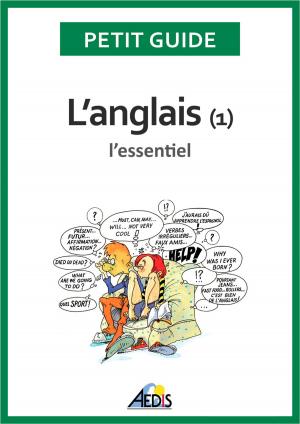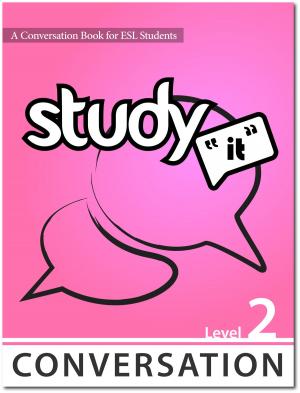Collaborative Learning in Learner Development
Nonfiction, Reference & Language, Study Aids, ESL, Foreign Languages| Author: | JALT Learner Development SIG | ISBN: | 9784901352451 |
| Publisher: | JALT Learner Development SIG | Publication: | December 21, 2014 |
| Imprint: | Smashwords Edition | Language: | English |
| Author: | JALT Learner Development SIG |
| ISBN: | 9784901352451 |
| Publisher: | JALT Learner Development SIG |
| Publication: | December 21, 2014 |
| Imprint: | Smashwords Edition |
| Language: | English |
Edited by Tim Ashwell, Masuko Miyahara, Steven Paydon and Alison Stewart, Collaborative Learning in Learner Development (“CLiLD”) presents 12 chapters, comprising reviews of the field, dialogue, action research and reflections, which together offer a multifaceted and critical new look at the widely held assumption that people learn best in groups. This collection of papers may be of interest to anyone who has ever wondered what the difference between collaborative and cooperative learning is, or how collaboration may be distinct from collaborative learning, or whether anything is actually learned when people study together in groups.
The first two introductory chapters help readers orient themselves towards collaborative learning (CL) by providing a critical review of the key terms that are used and the theories that are referred to throughout the collection. In Chapter 1, we attempt to clarify some key terms in order to establish some broad parameters and direction. In Chapter 2, we explain some of the theoretical areas that are frequently connected to CL and that provide frameworks for understanding what collaboration and collaborative learning involve.
The ten original studies which form the core of this collection appear as Chapters 3 to 12. Chapter 3, written by Steven Paydon and Dexter Da Silva, is an exception to the other papers in not being based on a piece of empirical action research. Instead Paydon and Da Silva present a discussion of the complex issue of trust which they consider an essential element when the goal is long-lasting, committed and valuable collaborative learning. Chapters 4, 5 and 6 are studies of CL implementations in regular university English language classes. In Chapter 4, Etsuko Shimo investigates the relationship between the CL activities she uses in an integrated skills course and students’ motivational orientations. In Chapter 5, Hiromi Tsuda also explores the connection between CL and motivation, but specifically focuses on the use of CL pre-listening tasks. In Chapter 6, Chika Hayashi analyzes in detail entries in a group journal to see how collaboration and students’ writing developed over the course of a year.
The following two chapters move us beyond regular English language courses to explore CL in different contexts. In Chapter 7, Martin Mullen and Chris Fitzgerald explain how CL activities were integrated into a course specifically aimed at developing learner autonomy. In Chapter 8, Mathew Porter shows how materials for collaborative activities were used and assessed in a self-access learning centre environment.
The next two chapters are concerned with the implementation of CL within university seminar classes. In Chapter 9, Tim Ashwell shows how a team-based learning approach was used in a seminar class which focused on topics in linguistics. In Chapter 10, Ken Ikeda explains how he introduced cross-institutional CL to help his students develop their graduation thesis projects and help him grow professionally as a seminar teacher.
In the final two chapters, the role of CL in formal teacher development is explored. In Chapter 11, Ann Mayeda looks at how CL activities helped pre-service trainee teachers of English to young learners develop both their English language proficiency and their disposition towards teaching. In Chapter 12, Hideo Kojima shows how collaborative learning developed between colleagues in an elementary school as they implemented English language activities.
We hope this collection may answer some questions and inspire other teachers to explore the potential CL has for learner development and learning itself.
Edited by Tim Ashwell, Masuko Miyahara, Steven Paydon and Alison Stewart, Collaborative Learning in Learner Development (“CLiLD”) presents 12 chapters, comprising reviews of the field, dialogue, action research and reflections, which together offer a multifaceted and critical new look at the widely held assumption that people learn best in groups. This collection of papers may be of interest to anyone who has ever wondered what the difference between collaborative and cooperative learning is, or how collaboration may be distinct from collaborative learning, or whether anything is actually learned when people study together in groups.
The first two introductory chapters help readers orient themselves towards collaborative learning (CL) by providing a critical review of the key terms that are used and the theories that are referred to throughout the collection. In Chapter 1, we attempt to clarify some key terms in order to establish some broad parameters and direction. In Chapter 2, we explain some of the theoretical areas that are frequently connected to CL and that provide frameworks for understanding what collaboration and collaborative learning involve.
The ten original studies which form the core of this collection appear as Chapters 3 to 12. Chapter 3, written by Steven Paydon and Dexter Da Silva, is an exception to the other papers in not being based on a piece of empirical action research. Instead Paydon and Da Silva present a discussion of the complex issue of trust which they consider an essential element when the goal is long-lasting, committed and valuable collaborative learning. Chapters 4, 5 and 6 are studies of CL implementations in regular university English language classes. In Chapter 4, Etsuko Shimo investigates the relationship between the CL activities she uses in an integrated skills course and students’ motivational orientations. In Chapter 5, Hiromi Tsuda also explores the connection between CL and motivation, but specifically focuses on the use of CL pre-listening tasks. In Chapter 6, Chika Hayashi analyzes in detail entries in a group journal to see how collaboration and students’ writing developed over the course of a year.
The following two chapters move us beyond regular English language courses to explore CL in different contexts. In Chapter 7, Martin Mullen and Chris Fitzgerald explain how CL activities were integrated into a course specifically aimed at developing learner autonomy. In Chapter 8, Mathew Porter shows how materials for collaborative activities were used and assessed in a self-access learning centre environment.
The next two chapters are concerned with the implementation of CL within university seminar classes. In Chapter 9, Tim Ashwell shows how a team-based learning approach was used in a seminar class which focused on topics in linguistics. In Chapter 10, Ken Ikeda explains how he introduced cross-institutional CL to help his students develop their graduation thesis projects and help him grow professionally as a seminar teacher.
In the final two chapters, the role of CL in formal teacher development is explored. In Chapter 11, Ann Mayeda looks at how CL activities helped pre-service trainee teachers of English to young learners develop both their English language proficiency and their disposition towards teaching. In Chapter 12, Hideo Kojima shows how collaborative learning developed between colleagues in an elementary school as they implemented English language activities.
We hope this collection may answer some questions and inspire other teachers to explore the potential CL has for learner development and learning itself.















